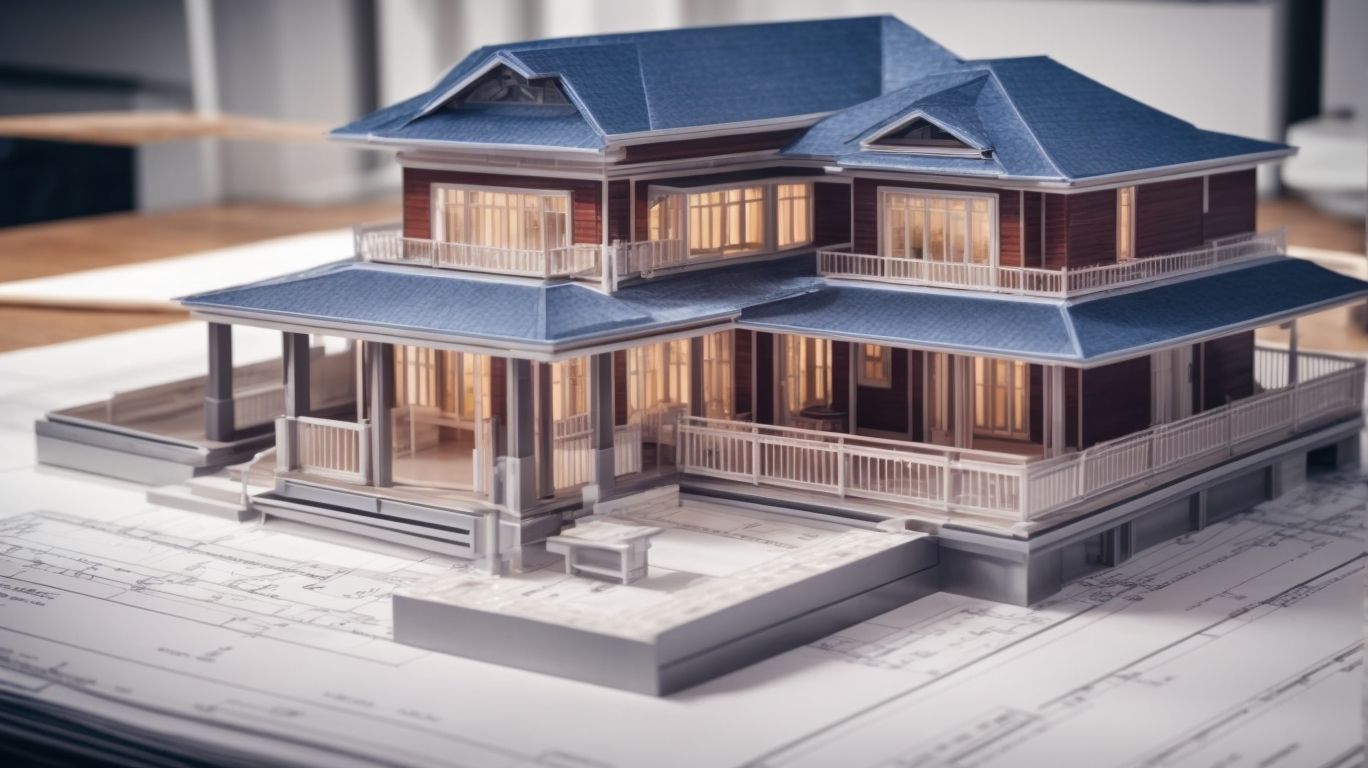
Mastering the Home Addition Process: A Guide to Planning Your Second Story Expansion in the Bay Area
Are you considering expanding your home with a second story addition in the Bay Area?
This guide will walk you through the ins and outs of planning and executing a successful second story expansion, from assessing your home’s structural capabilities to hiring the right contractor and navigating the construction process.
Discover the benefits, considerations, and steps involved in creating your dream home. Get ready to enjoy the fruits of your labor in a newly expanded space.
What is a Second Story Expansion?
A second story expansion involves adding a new level to an existing home, creating additional living space and enhancing the overall architectural design.
This type of home addition can significantly increase the square footage of a property without expanding its footprint, making it a cost-effective solution for those looking to maximize their living space.
Architecturally, a second-story expansion requires careful planning to ensure structural integrity and visual harmony with the existing structure. Factors such as foundation support, load-bearing walls, and building codes must be carefully considered during the design phase. The process typically involves working closely with architects, engineers, and contractors to bring the vision to life, resulting in a seamless integration of the new level with the original home.
Benefits of a Second Story Expansion
Expanding your home with a second story can significantly increase the property’s market value, improve the neighborhood’s appeal, and provide a solid return on investment.
A second story addition not only adds more living space but also opens up the possibility for enhanced functionality within the home. With the additional square footage, homeowners can create new bedrooms, bathrooms, or even a dedicated workspace, making the property more attractive to potential buyers in the future.
The visual impact of a two-story home often adds a sense of grandeur to the neighborhood, elevating the overall aesthetics and curb appeal. From an investment perspective, the cost of adding a second story can translate into a substantial increase in the property’s value, offering a lucrative opportunity for long-term financial growth.
Considerations Before Starting a Second Story Expansion
Before embarking on a second story expansion project, it is crucial to thoroughly plan the construction process, adhere to zoning regulations, and engage a structural engineer to ensure the safety and compliance of the new structure.
This planning phase involves detailed assessments of the existing structure’s foundation and load-bearing capacity to determine if it can support the additional weight of a second story. Zoning regulations play a significant role as they dictate the permissible height, setbacks, and overall design of the expansion. A structural engineer comes into the picture to conduct a structural analysis, identifying any potential risks or modifications needed to make the home structurally sound for a vertical expansion.
Planning Your Second Story Expansion
Planning your second story expansion involves detailed considerations regarding construction methods, renovation requirements, and the creation of an efficient floor plan to optimize the new living space.
When embarking on a second story expansion project, it is crucial to assess the existing structure to determine the feasibility of adding another level. Analyzing the foundation, load-bearing walls, and overall condition of the building is vital in ensuring a safe and stable construction process.
Renovation strategies should prioritize seamless integration of the new space with the existing design, considering factors like exterior aesthetics and interior flow. Designing a functional floor plan involves maximizing natural light, ensuring proper ventilation, and creating a layout that enhances the overall livability of the expanded area.
Assessing Your Home’s Structural Capabilities
Evaluating your home’s structural capabilities, including the foundation strength and space utilization potential, is essential before proceeding with a second story expansion project, requiring the expertise of a structural engineer.
By conducting a thorough assessment of your home’s foundation, you can ensure that it can support the additional weight and stress from a second story. Consider factors such as soil type, existing cracks, and settlement issues.
In terms of space utilization, examine how the current layout can be optimized to accommodate the new level seamlessly. A structural engineer plays a crucial role in evaluating the building’s structural capacity and providing recommendations for necessary reinforcements to guarantee the safety and durability of the expanded space.
Determining Your Budget and Timeline
Establishing a clear budget, defining the project timeline, and accurately estimating costs are fundamental steps in the planning process of a second story expansion, ensuring financial readiness and realistic expectations.
A well-thought-out budgeting strategy is crucial for allocating resources effectively, preventing overspending, and avoiding financial setbacks during the construction phase.
Similarly, setting a realistic project timeline plays a significant role in coordinating tasks, monitoring progress, and ensuring timely completion.
In addition, precise cost estimation helps in identifying potential expenses, negotiating deals, and staying within the allocated budget.
By incorporating these elements into the planning phase, individuals can enhance the chances of a successful and organized second story expansion project.
Obtaining Necessary Permits and Approvals
Securing the required building permits, complying with local regulations, and obtaining necessary approvals are critical stages in the planning phase of a second story expansion, ensuring legal adherence and project initiation.
Navigating the permit acquisition process involves engaging with the relevant authorities to gather the necessary documentation, such as architectural plans and environmental impact assessments. Regulatory compliance encompasses adhering to zoning laws, building codes, and safety standards to guarantee the structural integrity and safety of the proposed expansion. Obtaining the essential approvals prior to breaking ground on a second story addition is vital to prevent potential delays, fines, or even halt of construction due to non-compliance with permit regulations.
Hiring a Contractor
Selecting the right contractor for your second story expansion project is paramount, involving the evaluation of subcontractors, expert consultation, and effective communication to ensure a successful collaboration.
By carefully assessing potential contractors, you can gauge their experience, past work, and reputation, which are crucial in making an informed decision.
Managing subcontractors efficiently is key to maintaining project timelines and quality standards.
Seeking expert consultations can provide valuable insights and recommendations, helping you navigate complex project requirements and potential challenges.
Utilizing these resources can lead to a more streamlined and cost-effective construction process, ultimately contributing to the overall success of your project.
Finding the Right Contractor for Your Project
Identifying and engaging a reputable contractor who aligns with your project goals, excels in project management, and values teamwork is crucial for the successful execution of a second story expansion.
When it comes to contractor selection, project management skills play a pivotal role. Effective project management ensures that timelines are adhered to, resources are optimized, and potential challenges are proactively addressed.
Teamwork dynamics are essential for a smooth construction process. A contractor who prioritizes collaboration and open communication among team members can foster a positive working environment and enhance efficiency.
Shared project goals serve as a guiding light, aligning all parties towards a common vision and increasing the likelihood of a successful project outcome.
Understanding the Contract and Payment Process
Familiarizing yourself with the contract terms, understanding the contracting process, and ensuring mutual satisfaction are essential components of hiring a contractor for your second story expansion, ensuring legal compliance and project success.
By comprehensively grasping the legal requirements outlined in the contract, you can establish a solid foundation for a transparent and effective client-contractor relationship. Clarity on legal obligations prevents misunderstandings and potential conflicts during the project lifecycle, enhancing the overall quality of communication and collaboration.
The contracting process, when approached with diligence and attention to detail, streamlines the project execution and ensures that both parties are aligned with the project milestones and deliverables. Effective client-contractor communication plays a pivotal role in addressing any concerns promptly, fostering trust, and maintaining satisfaction throughout the project journey.
The Construction Process
The construction process of a second story expansion involves meticulous project management, continuous progress tracking, and stringent quality control measures to ensure the timely and successful completion of the remodeling.
Project management plays a crucial role in coordinating all aspects of the expansion project, from scheduling subcontractors to procuring materials. Effective project management strategies involve setting clear objectives, establishing timelines, and monitoring progress regularly to address any delays promptly. Progress monitoring techniques such as milestone tracking, daily reports, and regular site visits help ensure that the project stays on track. Quality control is imperative in maintaining construction standards, with inspections and tests conducted at key milestones to verify compliance with specifications and regulations.
Demolition and Preparation
The initial stages of the construction process involve demolition of existing structures, site preparation, and implementation of safety measures to safeguard the property and ensure a secure foundation for the upcoming expansion.
During the demolition phase, it’s crucial to carefully dismantle the existing structures to make way for the remodeling efforts. Preparation tasks include clearing debris, securing the area, and protecting the foundation from any potential damage. Safety protocols such as wearing protective gear, using proper tools, and following established procedures are paramount during the construction kickoff. These measures not only ensure the safety of the workers but also contribute to the smooth progress of the project. Foundation protection is a key consideration to maintain the structural integrity of the building throughout the construction process.
Framing and Structural Work
Framing the new structure, conducting essential structural work, and installing key components such as roofing and windows are pivotal phases in the construction process of a second story expansion, shaping the home’s architectural integrity.
Architectural considerations play a crucial role in this phase, as the design must not only be visually appealing but also structurally sound. The roofing installations need to complement the overall aesthetic of the property, ensuring durability and weather resistance. Window placements are strategically planned to maximize natural light, ventilation, and views while maintaining the building’s proportion and balance. The coordination between architecture, roofing, and windows is essential to create a harmonious and aesthetically pleasing structure.
Electrical, Plumbing, and HVAC Installation
Integrating electrical systems, plumbing fixtures, HVAC installations, and insulation components are critical tasks during the construction process of a second-story expansion, ensuring functional utility and energy efficiency.
Each of these components plays a vital role in the overall functionality of the expanded space. When it comes to electrical work, careful planning and precise installation are crucial to ensure a safe and reliable power supply throughout the new area. Plumbing fixtures need to be strategically placed to optimize water flow and drainage efficiency. HVAC systems must be installed with precision to provide adequate heating and cooling for the expanded space. Insulation installation is key to maintaining a comfortable indoor climate and minimizing energy loss. The seamless integration of these systems is essential for a well-functioning and energy-efficient second-story expansion.
Insulation, Drywall, and Finishing Work
Applying insulation, installing drywall, and executing finishing touches like roofing enhancements are final steps in the construction process that contribute to the project’s completion and overall aesthetic appeal.
These crucial components not only aid in achieving the desired visual aesthetics but also play a vital role in maintaining energy efficiency and structural integrity of the building.
When it comes to roofing considerations, selecting the right materials and ensuring proper installation are key factors in ensuring durability and weather resistance.
Insulation, whether in the form of fiberglass, foam, or other types, helps regulate indoor temperature and reduce energy costs.
Proper drywall installation provides a smooth and uniform surface for painting or wallpaper application, adding the final polished touch to the project.
Flooring, Painting, and Final Touches
Completing the second story expansion involves flooring installations, painting applications, and adding final touches such as windows and doors to enhance the overall aesthetics and functionality of the newly renovated space.
After the flooring is expertly installed, the next step involves carefully choosing the perfect paint colors to complement the room’s natural light and design elements.
Once the paint dries, attention is turned to the installation of windows and doors, which are not only essential for natural light and ventilation but also play a crucial role in defining the space’s aesthetic appeal. Each window and door is strategically placed to maximize both light and functionality, ensuring a seamless transition between indoor and outdoor spaces.
The addition of stylish curtains or blinds provides the finishing touch, adding both elegance and privacy to the expanded living area.




No Comments